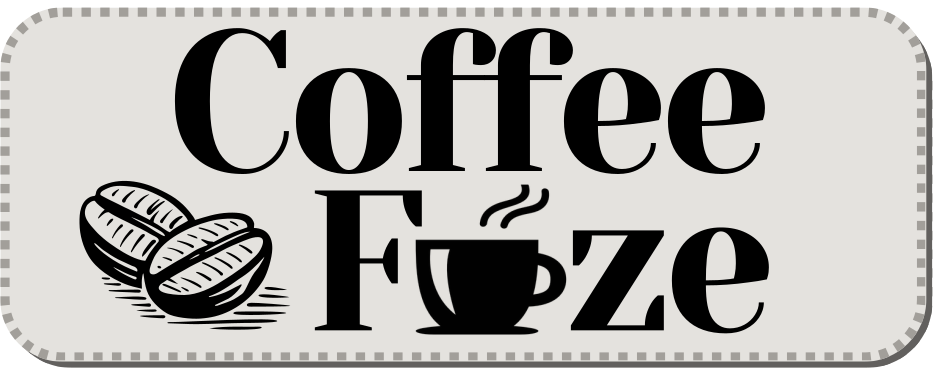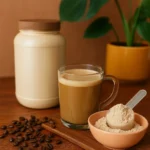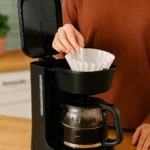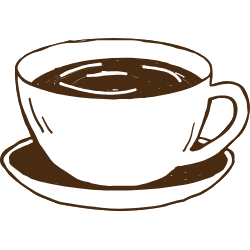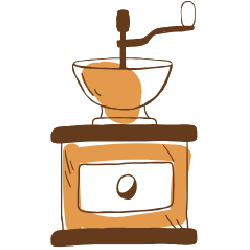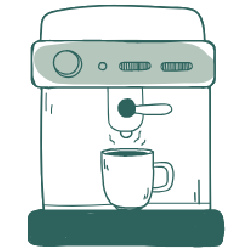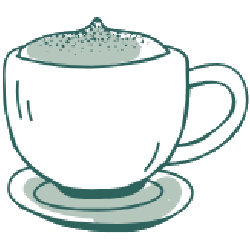Coffee brings so many flavors, smells, and experiences. How you make your coffee really changes its final taste. It turns simple beans into something complex and layered. This guide will show you different brewing methods. You’ll see what makes each one special. You’ll also learn how to pick the best one for what you like. Coffee is huge around the world. Lots of people want to brew at home. Learning these ways to make coffee is fun and worthwhile.
What are the fundamental coffee brewing categories?
Coffee brewing methods usually fit into three main groups: Pour-over, Immersion, and Espresso. These differ in how they pull flavor from the coffee. That affects the coffee’s body and its unique taste. Knowing these differences helps you enjoy your daily cup even more. These basic ideas guide how water touches coffee grounds to get those tasty compounds out.
What is pour-over (percolation) coffee brewing?
Pour-over brewing uses gravity. Hot water drips through coffee grounds. As it moves through the filter, it pulls out flavor. You control things like water flow, temperature, and grind size. This method usually makes a clean, bright, nuanced cup. The flavor is clear. Think of devices like the Hario V60, Chemex, or Kalita Wave. They each offer slight changes in how the coffee brews.
What is immersion coffee brewing?
Immersion brewing means soaking coffee grounds completely in water. The grounds stay submerged for a set time. This pulls flavor from all particles at once. You control brew time, water temperature, and grind size to get the coffee you want. Immersion usually makes a fuller-bodied, strong coffee. It often tastes richer because it keeps more oils. Filters matter: a metal one in a French Press lets more through. A paper filter in an AeroPress makes it clearer. Cold Brew is another common immersion method.
What is espresso coffee brewing?
Espresso brewing uses high pressure for a fast extraction. An Espresso Machine pushes hot water—at 9 to 10 bars of pressure—through finely ground, tightly packed coffee. This happens in only 20 to 30 seconds. You need a very fine grind, the right amount of coffee, and exact timing. This process gives you a highly concentrated, thick shot. It has a reddish-brown foam on top called crema. Expect an intense, bold flavor.
What are the most popular coffee brewing methods?
Looking at common coffee brewing methods shows how varied your daily cup can be. Each method works differently. This gives you a unique coffee taste and body. Know what equipment you need. Understand the right grind size for each. This helps you get a perfect brew.
What is auto-drip coffee brewing and how does it work?
Auto-drip, or just drip coffee, is popular because it’s easy and convenient. A Drip Coffee Maker heats water. It then drips this water through coffee grounds in a filter. The water pulls out flavor as it goes. The brewed coffee collects in a pot below. Drip coffee usually tastes smooth and balanced, with medium acidity. You need the drip coffee maker itself, filter papers, a Burr Grinder for even grounds, and a Scale for exact amounts. Use a medium grind for drip coffee. Think table salt. This helps you get the best flavor without over or under-extracting.
How does French Press coffee brewing work?
The French Press uses full immersion and a plunger. This makes a unique cup. Coarse coffee grounds soak in hot water for several minutes. Then, a mesh plunger pushes the grounds away from the coffee. People love French Press for its rich, full-bodied, strong, and earthy taste. It also has a heavy body. You need a French Press Device, a Burr Grinder for a coarse grind, a Kettle for hot water, and a Scale for correct ratios. Its metal filter lets fine particles and oils pass through. This gives French Press coffee more suspended solids, adding to its unique texture and strong taste.
What makes AeroPress a unique coffee brewing method?
The AeroPress is special. It mixes immersion with gentle pressure. It’s very portable and fast. This device soaks coffee grounds in water. Then, it pushes the brew through a filter using air pressure. The flavor profile is flexible. It can be clean and smooth or strong and bold. The body changes with how you brew it. For AeroPress, you need the AeroPress Device, a Burr Grinder, an Electric Kettle for exact heat, and a Scale. The grind size is very flexible. You can use anything from a fine grind to a medium grind. This lets you experiment a lot.
How is cold brew coffee prepared?
Cold Brew Coffee is a type of immersion. It uses cold or room-temperature water. The steeping time is long, usually 12 to 24 hours. This slow, low-temperature process means fewer bitter compounds and acids release. The result is a smooth, mellow, low acidity coffee. It often has a natural, slightly sweet taste. You don’t need much equipment for cold brew—just a big Jar or a special Cold Brew Maker. Use a coarse grind, like breadcrumbs. This helps with proper extraction over the long time and stops it from getting over-extracted.
What is the Moka Pot coffee brewing method?
The Moka Pot Coffee is a stovetop method driven by steam. It makes strong, bold coffee. It’s like espresso, but not as smooth. Water heats in the bottom chamber. This creates steam pressure. That pressure pushes the water up through coffee grounds in the middle filter. The coffee collects in the top chamber. All you need is the Moka Pot device itself. It makes a concentrated, strong brew. Many people worldwide love it for its intense taste. It truly gives you a strong coffee.
How do manual pour-over coffee brewing methods work?
Manual pour-over coffee gives you great control and precision. Think of devices like the Hario V60, Chemex, and Kalita Wave. You slowly pour hot water over coffee grounds in a cone-shaped brewer. Gravity pulls the liquid through a filter into a serving pot. This method gives you a clean, bright, and nuanced coffee. It shows remarkable clarity. For this, you need a Pour-over Cone, the right Filter Papers, a Gooseneck Kettle for exact pouring, a Burr Grinder, and a Scale. The ideal grind for pour-over is usually between medium grind and fine grind. Adjust it for your device and how fast you want to extract. This helps you get truly nuanced flavors.
| Method | Category | Grind Size | Taste Profile/Body | Key Equipment |
|---|---|---|---|---|
| Auto-Drip | Pour-over (Percolation) | Medium | Smooth, balanced, moderate acidity | Drip Coffee Maker, filter papers, Burr Grinder, Scale |
| French Press | Immersion | Coarse | Rich, full-bodied, robust, earthy | French Press Device, Burr Grinder, Kettle, Scale |
| AeroPress | Immersion/Pressure | Fine to Medium | Versatile (clean/smooth to strong/bold), variable body | AeroPress Device, Burr Grinder, Electric Kettle, Scale |
| Cold Brew | Immersion | Coarse | Smooth, mellow, low acidity, slightly sweet | Large Jar or Cold Brew Maker |
| Moka Pot | Steam-driven | Fine to Medium | Strong, bold, concentrated | Moka Pot device |
| Manual Pour-over | Pour-over (Percolation) | Medium to Fine | Clean, bright, nuanced, clear | Pour-over Cone, Filter Papers, Gooseneck Kettle, Burr Grinder, Scale |
| Espresso | Pressure | Very Fine | Highly concentrated, viscous, intense, bold | Espresso Machine |
What key factors influence your coffee’s taste?
Beyond the main brewing methods, other factors really change your coffee’s final taste. They affect how complex the flavor is. These elements work together to shape every sip. Knowing these lets you fine-tune your brewing. You’ll get better results and a richer coffee experience.
- Grind Size: How fine or coarse your grounds are changes extraction speed,
- Water Quality and Temperature: Use filtered water and the right heat for good dissolving,
- Extraction Time: How long water touches coffee affects its strength and bitterness,
- Filtration Method: Paper or metal filters change the clarity and body,
- Brewing Pressure: The force used during brewing affects intensity and mouthfeel.
How does grind size affect coffee taste?
Your coffee’s grind size really changes how much surface area the particles have. This affects how fast flavor pulls out. A finer grind exposes more surface to water. This leads to faster extraction and a stronger brew. A coarse grind pulls flavor slower, making a lighter cup. Use a good Burr Grinder for consistent grind size. This ensures even extraction. It also prevents bad flavors. For example, a fine grind is best for espresso. A medium grind works well for drip coffee.
Why are water quality and temperature important for coffee brewing?
Good water quality is key for great coffee. Fresh, filtered water lets your coffee’s real flavors come through. Impurities can give it a bad taste. The best brewing temperature is usually between 195°F and 205°F (90.5°C–96.1°C). Water that is too hot can over-extract your coffee, making it bitter. If the water is too cold, you’ll get under-extraction, leading to a weak, sour taste. Remember, water makes up over 98% of your cup. Its quality truly matters.
What is extraction time in coffee brewing?
Extraction time is how long coffee grounds stay in contact with water. This period greatly affects your coffee’s strength, bitterness, and body. If you extract too short, you get under-extraction. This results in a sour, weak taste because not enough flavor compounds dissolve. If you extract too long, you get over-extraction. This gives you bitter, harsh coffee as bad compounds pull out. Find the right time. This ensures a balanced and tasty brew.
How does the filtration method impact coffee?
Your Filtration Method strongly affects your coffee’s clarity and body. Paper filters soak up more coffee oils. They also trap fine sediments. This gives you a cleaner, brighter cup with a lighter body. Metal filters, however, let more oils and tiny particles pass into the cup. This makes a richer body and a more noticeable texture. Each filter type gives a different experience. You can choose based on the texture and clarity you want.
How does brewing pressure affect coffee?
Brewing pressure matters a lot for methods like Espresso and AeroPress. It directly affects flavor intensity and how it feels in your mouth. High pressure quickly pulls out soluble compounds. This creates a very concentrated, thick drink. For espresso, you need 9 to 10 bars of pressure. This forms the signature crema. With the AeroPress, manual pressure allows for quick, flexible extraction. This makes a clean yet full-bodied cup. This force really adds to the coffee’s body and texture, making it richer.
How can you choose your perfect coffee brewing method?
Picking your best coffee brewing method depends totally on what you like. Think about your taste, how much time you have, and if you want to buy more equipment. No single method is “best.” It’s about finding the right fit for your life and what you want from your coffee. This part helps you look at your choices and find your ideal brewing partner.
Consider these points when you choose:
- Desired Taste Profile: Do you like bold, clean, or mellow flavors,
- Available Time: How much time will you spend brewing each day,
- Equipment & Ease of Use: What’s your budget, and how comfortable are you with different devices?
Which coffee brewing method suits your desired taste profile?
Your Taste Profile helps you pick a coffee brewing method. If you like strong and intense, concentrated coffee, go for Espresso. It has a bold flavor and rich crema. If you enjoy a clean and bright, nuanced cup that shows off subtle origin flavors, manual pour-over brewing is perfect. If your preference leans towards a smooth, mellow experience with low acidity, then Cold Brew gives you a naturally sweet and easy-to-drink option. Think about if you want a fuller body from immersion methods or a lighter, clearer cup from percolation methods. The best coffee is the one you enjoy most. That enjoyment starts by matching your brewing method to your preferred taste.
How does available time influence your choice of coffee brewing method?
The time you have really affects your brewing choice. For a quick brew, consider AeroPress or a single espresso shot. They take just a few minutes. Auto-drip coffee makers are also fast and handy for bigger amounts. If you have a bit more time, manual pour-over might take 3 to 5 minutes. This lets you be more involved. If you have plenty of time and plan ahead, Cold Brew is a perfect long brew method. It needs 12 to 24 hours of steeping for its unique smooth taste, but your active time is minimal.
What coffee equipment is needed for different brewing methods?
The coffee equipment you need and how complex it feels vary a lot for different brewing methods. Simple methods, like a French Press Device or AeroPress Device, are usually cheap and easy. They need few extra tools. Manual pour-over setups, with a Pour-over Cone and a Gooseneck Kettle, give you more control. But they need a bit more skill. On the pricier end, an Espresso Machine is a big investment. It costs more and takes time to learn, though it opens up many complex drinks. Think about your budget and how much you want to get involved. A basic drip coffee maker is super easy for everyday use.
What are the emerging trends in coffee brewing methods?
The coffee world always changes. This brings new and interesting ways to brew. Beyond classic techniques, new things are popping up. They offer fresh ways to enjoy your favorite drink. These trends often focus on making things easier, creating unique flavors, or being more sustainable. They push the limits of what you can get in a cup.
What is snapchilled coffee?
Snapchilled Coffee is a special way to quickly cool hot brewed coffee. This method instantly chills the coffee. It keeps its fresh smells and flavors without watering it down. You get a crisp, undiluted cold coffee. This is different from traditional cold brew, which never gets hot. Snapchilled coffee gives you the clarity of a hot brew, but served cold. It’s refreshing and ready to drink right away.
What is high-quality instant coffee?
High-Quality Instant Coffee is changing what people think. It offers much better flavors, even from specialty coffee beans. New freeze-drying tech means these products keep more of the original coffee’s complex taste and smells. This trend gives you unmatched convenience without losing flavor. You can make a delicious cup in seconds. It closes the gap between fast coffee and the nuanced experience you usually get from fresh brew.
What is the best way to brew coffee?
The wide world of coffee brewing methods truly has a technique for everyone. It fits any preference or lifestyle. You can go from the quick ease of drip coffee to the rich intensity of Espresso. Each method offers a unique way to your perfect cup. What’s “best” depends on you. It’s about your taste, how much time you have, and the coffee equipment you own. We hope you experiment with different brewing methods. Find what really excites your senses. Exploring coffee is a journey as good as the coffee itself. What’s your favorite way to brew?
